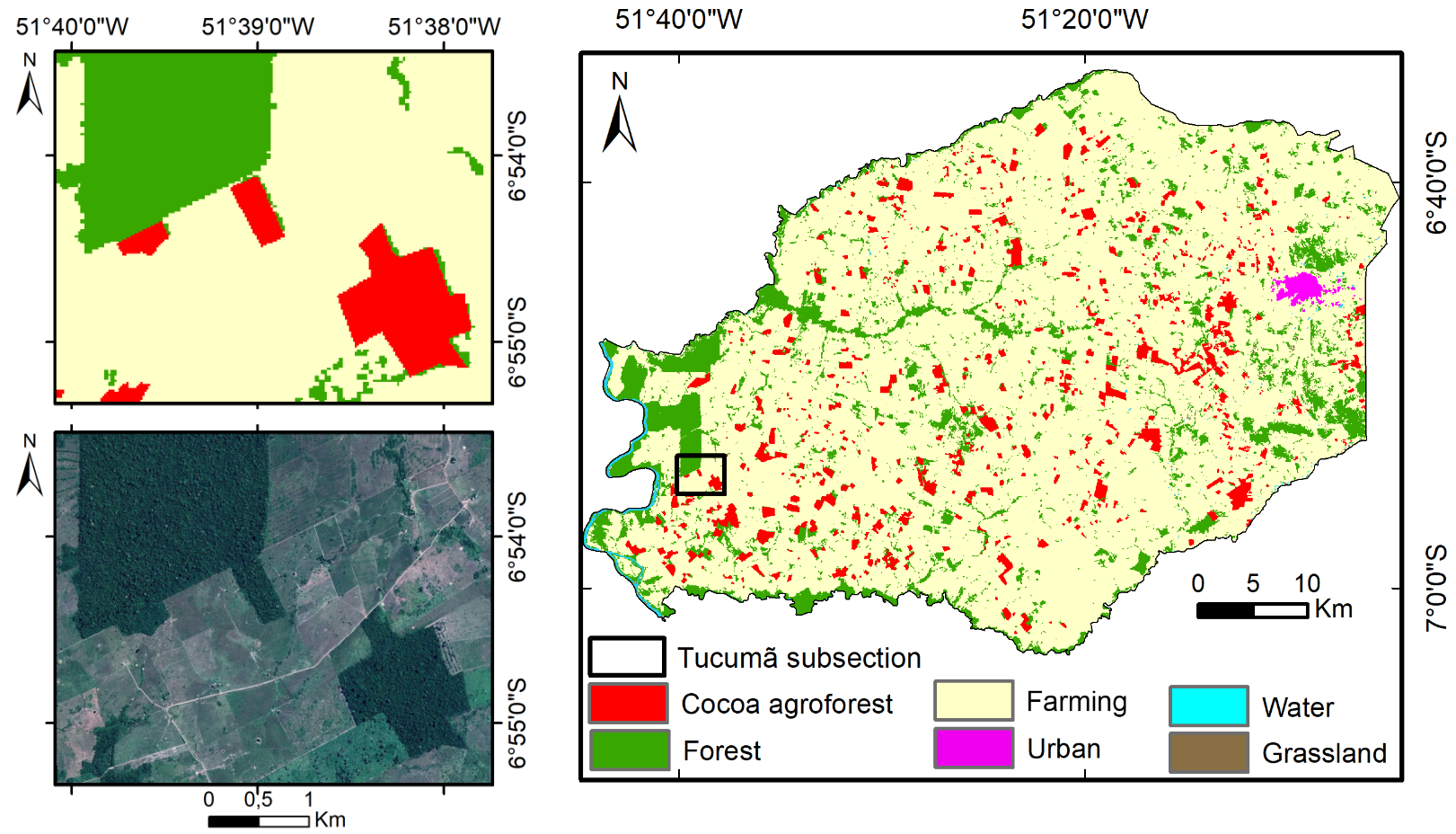The paper “Optical Time Series for the Separation of Land Cover Types with Similar Spectral Signatures: Cocoa Agroforest and Forest”, authored by LASIGE’s PhD student João E. Batista, has been published in the International Journal of Remote Sensing, a top-ranked journal in Remote Sensoring (h5-index 52; Scimago Q1). The paper co-authors are LASIGE’s PhD student Nuno M. Rodrigues and integrated researcher Sara Silva, Ana I. R. Cabral and Maria J. P. Vasconcelos from Forest Research Centre (CEF, ULisboa), and Adriano Venturieri and Luiz G. T. Silva from Embrapa Amazônia Oriental.
One of the main applications of machine learning (ML) in remote sensing (RS) is the pixel-level classification of satellite images into land cover types. Although some classes can be easily separated, e.g., aquatic and terrestrial land cover types, others have similar spectral signatures and are hard to separate using only the information within a single pixel. For example, in the picture above, we can see cocoa agroforest (red) and forest (green) cover types. Since the cocoa trees are planted on the shade of taller trees, when seen from above, these cover types are nearly identical. The research now published focused on the separation of these two cover types, over an area in Pará, Brazil. To do this, the team studied the application of several machine learning algorithms in time series datasets, from simpler algorithms, such as the multilayer perception (MLP), to the state-of-the-art algorithms extreme gradient boosting (XGBoost) and ROCKET, to the feature construction algorithm M3GP. The work also comments on the features created by the M3GP algorithm, in an attempt to understand the choices made by the algorithm when creating the final model.
The article is available here.
